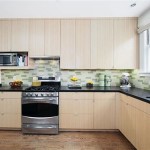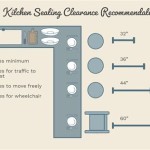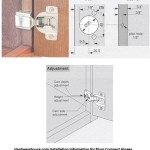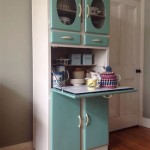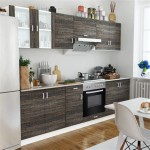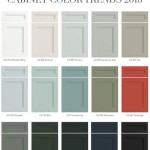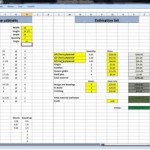How Much Do Refacing Kitchen Cabinets Cost?
Kitchen cabinet refacing is a popular renovation option chosen by homeowners seeking to update their kitchen's appearance without undergoing a full cabinet replacement. It involves replacing cabinet doors and drawer fronts, applying a new veneer to the existing cabinet boxes, and often updating hardware like hinges and handles. Understanding the cost implications of refacing is crucial for homeowners planning a kitchen remodel. The overall expense is influenced by various factors, including the size of the kitchen, the materials chosen, the complexity of the design, and the professional labor involved.
Refacing typically positions itself as a middle-ground solution between painting cabinets and completely replacing them. Painting is generally the least expensive option, but it offers the least dramatic change and may not address structural issues. Replacing cabinets provides the most extensive transformation, but also requires the greatest investment. Refacing aims to provide a significant aesthetic upgrade while minimizing disruption and cost compared to a full replacement.
This article will explore the various components that contribute to the total cost of kitchen cabinet refacing, providing a comprehensive overview to help homeowners make informed decisions about their kitchen renovation projects. We will delve into the materials available, the associated labor costs, and other factors that can impact the overall price. By understanding these details, homeowners can better budget for their refacing project and ensure they achieve their desired kitchen aesthetic within their financial constraints.
Factors Influencing the Cost of Kitchen Cabinet Refacing
Several key factors determine the final cost of kitchen cabinet refacing. These include the size and layout of the kitchen, the type of materials used for the doors, drawer fronts, and veneers, the complexity of the installation, and the labor costs associated with hiring a professional. Understanding how each of these elements contributes to the overall expense is essential for accurate budgeting.
The size of the kitchen is directly proportional to the cost. A larger kitchen will naturally have more cabinets, requiring more materials and labor. The number of doors and drawer fronts that need to be replaced, along with the area of cabinet boxes that need to be veneered, will all increase with the kitchen's size. Furthermore, complex kitchen layouts with islands or unusual cabinet configurations can increase the installation time and potentially the labor costs.
Material choices significantly impact the overall expenditure. Options range from affordable laminates and thermofoil to mid-range wood veneers and solid wood. Laminates and thermofoil are generally the most budget-friendly, offering a wide range of colors and textures. Wood veneers provide a more natural look and feel, while solid wood offers the highest quality and durability, but also comes with a higher price tag. The type of hardware selected, such as hinges, handles, and drawer pulls, also contributes to the overall cost. Decorative hardware can add a significant expense, depending on the style and material chosen.
The complexity of the installation plays a crucial role in determining the labor costs. Simple refacing projects involving standard cabinet configurations will typically have lower labor costs than those requiring modifications or customizations. If the existing cabinet boxes are not perfectly square or level, additional work may be needed to ensure a proper fit for the new doors and drawer fronts. Intricate designs or the addition of decorative elements can also increase the installation time and the expertise required, consequently increasing labor costs.
Labor costs vary depending on the location and the experience level of the contractor. Labor rates are generally higher in metropolitan areas and for contractors with extensive experience and a proven track record. It is advisable to obtain multiple quotes from different contractors to compare prices and ensure that the quoted price includes all necessary services, such as removal of old doors and drawer fronts, surface preparation, installation of new materials, and cleanup.
Material Options and Their Impact on Cost
The choice of materials is a primary driver of the cost of kitchen cabinet refacing. Different materials offer varying aesthetic qualities, durability, and price points. Selecting the appropriate materials requires careful consideration of budget constraints and desired aesthetic.
Laminate is a popular and cost-effective option for cabinet refacing. It consists of a thin layer of decorative paper bonded to a substrate, such as particleboard or MDF (medium-density fiberboard). Laminate is available in a wide range of colors, patterns, and textures, including wood-grain finishes. It is relatively durable and easy to clean, making it a practical choice for kitchens. However, laminate is susceptible to chipping and peeling, especially in areas with high moisture or heat. The cost of laminate refacing is generally lower than other options, making it an attractive choice for budget-conscious homeowners.
Thermofoil is another budget-friendly option that involves applying a thin layer of vinyl to a substrate using heat and pressure. Thermofoil offers a seamless, smooth finish and is available in various colors and styles. It is resistant to moisture and easy to clean. However, thermofoil is vulnerable to heat damage and can peel or bubble near ovens or dishwashers. Its durability is generally less than that of laminate or wood veneer, making it a better option for lower-traffic kitchens.
Wood veneer consists of thin slices of real wood adhered to a substrate. Wood veneer offers the natural beauty and feel of solid wood at a lower cost. It is available in various wood species, each with its unique grain patterns and color variations. Wood veneer is more durable than laminate or thermofoil and can be stained or painted to match the desired aesthetic. However, wood veneer is susceptible to scratches and dents and requires more maintenance than laminate or thermofoil. The cost of wood veneer refacing is typically higher than laminate or thermofoil but lower than solid wood.
Solid wood is the most expensive option for cabinet refacing. It offers the highest quality, durability, and aesthetic appeal. Solid wood cabinets can be crafted from various wood species, including maple, oak, cherry, and walnut. Solid wood is resistant to scratches and dents and can be refinished multiple times, extending its lifespan. However, solid wood is susceptible to moisture damage and requires proper sealing and maintenance. The cost of solid wood refacing can be significantly higher than other options but provides the most lasting value and aesthetic impact.
Hardware also plays an important role in material costs. Hinges, handles, and drawer pulls can be selected in various materials and styles, from basic metal options to decorative ceramic or glass pulls. The choice of hardware can significantly impact the overall cost of the refacing project. Higher-end hardware can add a substantial expense.
Estimating Labor Costs and Finding Qualified Professionals
Labor costs constitute a substantial portion of the overall expense of kitchen cabinet refacing. Accurate estimation of labor costs requires understanding the scope of the project, the complexity of the installation, and the prevailing labor rates in the area. Finding qualified professionals is crucial for ensuring a successful and satisfactory outcome.
The scope of the refacing project directly impacts the labor costs. A simple refacing project involving standard cabinet configurations and minimal modifications will typically have lower labor costs than a complex project requiring significant customization or modifications to the existing cabinet boxes. The number of cabinets being refaced, the type of materials used, and the extent of surface preparation required all contribute to the overall labor time.
The complexity of the installation is another key factor influencing labor costs. If the existing cabinet boxes are not perfectly square or level, additional work may be required to ensure a proper fit for the new doors and drawer fronts. Intricate designs or the addition of decorative elements can also increase the installation time and the expertise required, consequently increasing labor costs. Any modifications to the cabinet boxes, such as adding or removing shelves or changing the cabinet layout, will also add to the labor costs.
Prevailing labor rates vary depending on the location and the experience level of the contractor. Labor rates are generally higher in metropolitan areas and for contractors with extensive experience and a proven track record. It is advisable to obtain multiple quotes from different contractors to compare prices and ensure that the quoted price includes all necessary services, such as removal of old doors and drawer fronts, surface preparation, installation of new materials, and cleanup.
Finding qualified professionals is essential for ensuring a successful refacing project. It is recommended to seek out contractors with specific experience in cabinet refacing. Check online reviews and ask for references from previous clients. A reputable contractor will be licensed and insured, providing protection against potential liabilities. It is also recommended to review the contractor's portfolio to assess the quality of their work and their ability to meet your design expectations. A written contract outlining the scope of work, materials to be used, payment schedule, and warranty is crucial for protecting your interests. Ensure that the contract clearly defines the responsibilities of both the homeowner and the contractor.
Homeowners also have the option of DIY refacing. This can save on labor costs, but requires a significant time investment and skill. Improper installation can lead to issues like misaligned doors, gaps, and peeling veneer, which can detract from the look of the kitchen and potentially require costly repairs. Therefore, DIY refacing is only advised for homeowners with significant carpentry experience.
In summary, the cost of kitchen cabinet refacing depends on several interconnected factors. Careful planning, material selection, and finding the right professional are essential for staying within budget and achieving the desired results. By understanding these elements, homeowners can make well-informed decisions and enjoy a refreshed kitchen aesthetic.

What Is The Average Cost For Cabinet Refacing

Average Cost Of Kitchen Cabinet Refacing Mcmanus And Bath Design Build Remodeling Contractors Tassee

Average Cost To Reface Cabinets By Li Foot Material And Type Forbes Home

How Much Does Cabinet Refacing Cost 2024 S Homeguide

Cabinet Refacing Process And Cost Compared To Painting

Cabinet Refacing Cost Angi

Cabinet Refacing Cost How Much Will Your Project Be

Cost To Reface Cabinets The Home Depot

Kitchen Cabinet Refacing Review Why We Chose It For Our Home Kaitlin Madden

How Much Does Cabinet Refacing Cost N Hance

